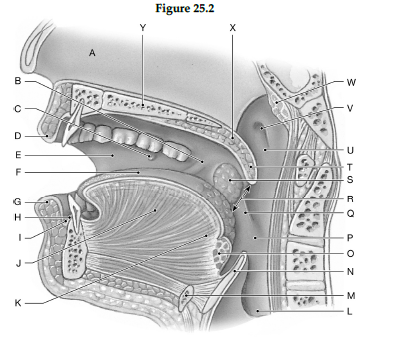Which structure in the fetus enables blood to bypass the lungs and pass directly from the right atrium to the left atrium?
A. Truncus arteriosus
B. Foramen ovale
C. Sinus venosus
D. Bulbus cordis
E. Ductus arteriosus
Answer: B
You might also like to view...
Using the figure below, identify the labeled part.

1) Label A: ______________________________
2) Label B: ______________________________
3) Label C: ______________________________
4) Label D: ______________________________
5) Label E: ______________________________
6) Label F: ______________________________
7) Label G: ______________________________
8) Label H: ______________________________
9) Label I: ______________________________
10) Label J: ______________________________
11) Label K: ______________________________
12) Label L: ______________________________
13) Label M: ______________________________
14) Label N: ______________________________
15) Label O: ______________________________
16) Label P: ______________________________
17) Label Q: ______________________________
18) Label R: ______________________________
19) Label S: ______________________________
20) Label T: ______________________________
21) Label U: ______________________________
22) Label V: ______________________________
23) Label W: ______________________________
24) Label X: ______________________________
25) Label Y: ______________________________
How is desynchronization of the alpha waves observed in the EEG, when a person with eyes closed suddenly opens them?
A. The frequency of the alpha wave decreases. B. The frequency of the alpha wave increases. C. The amplitude of the alpha wave increases. D. The amplitude of the alpha wave decreases. E. The alpha waves stop, as shown by an amplitude and a frequency of 0.
The primary function of the lymphatic system is
A) circulation of nutrients. B) the transport of hormones. C) defending the body against both environmental hazards and internal threats. D) the production and distribution of plasma proteins. E) both the transport of hormones and the production and distribution of plasma proteins.
What are the most numerous cells in the lungs?
A. Mucosal cells B. Type I alveolar cells C. Vibrissal cells D. Type II alveolar cells E. Dust cells